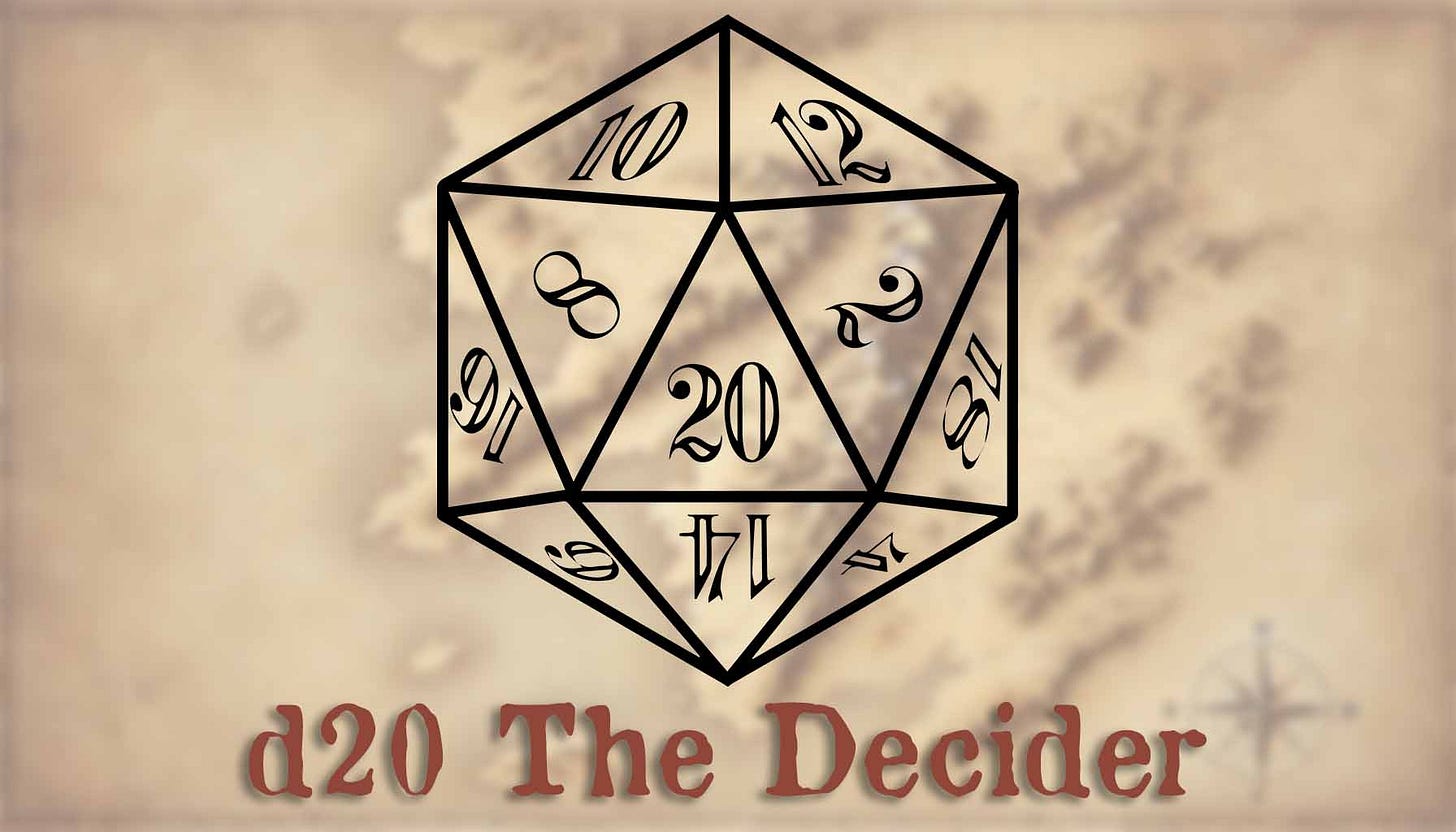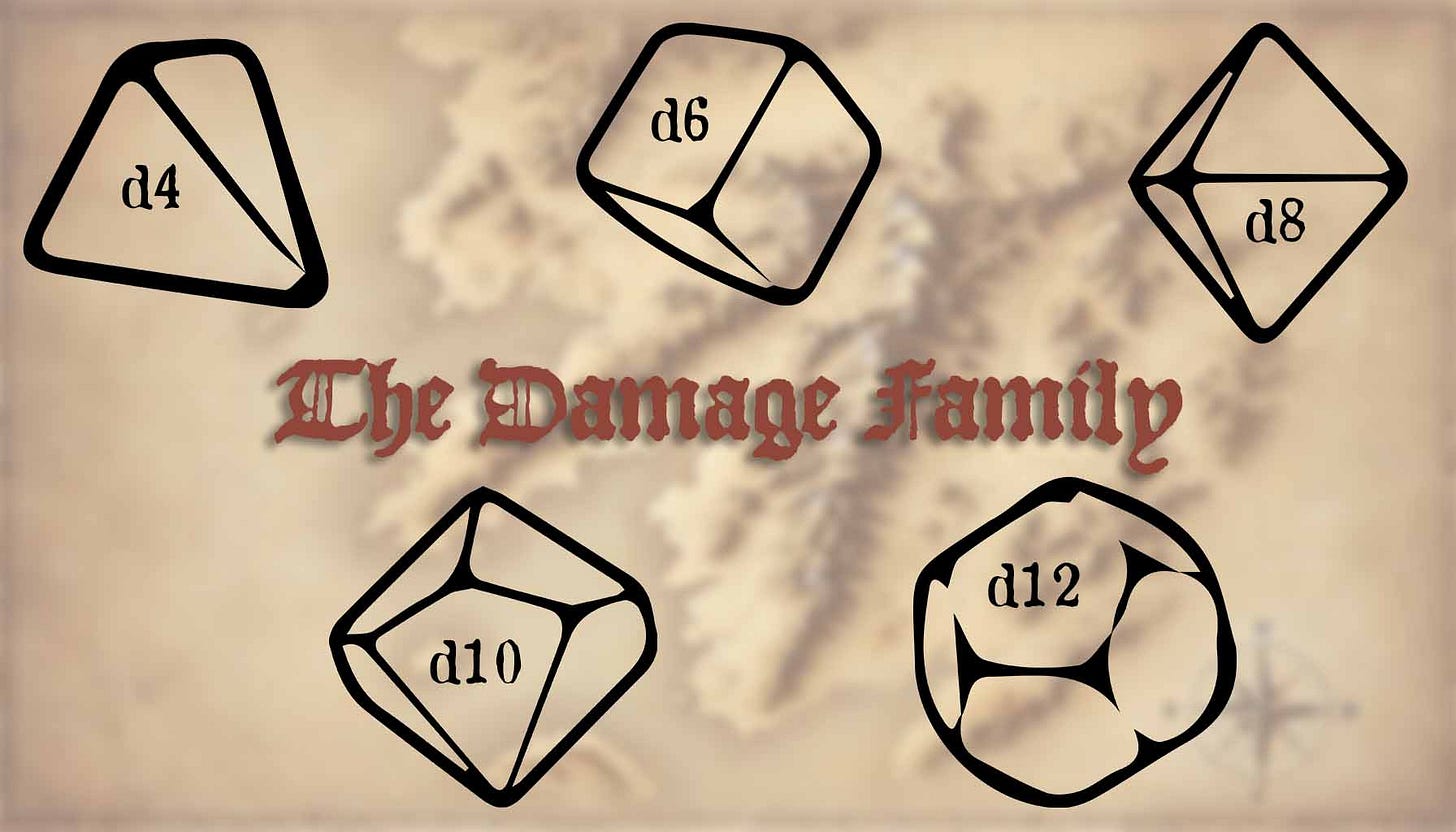New to Dungeons & Dragons?
Confused by all those weird-shaped dice?
You're not alone.
Every brave adventurer's first encounter with D&D dice involves equal parts wonder and bewilderment. We've all wondered, at some point, “What fresh nonsense is this?” Fear not. I, Professor Richard Crackfang, Arcane Wizard Extraordinaire (and handsome to boot), shall guide you through the mystical art of rolling the right die at the right time. By the end, you’ll know exactly which pointy plastic shape is which… and which is to blame for both your brag-worthy victories and your bumbling failures.
D&D employs seven different dice, each with its own personality and purpose. Dice are referred to by the letter d (for “dice,” duh) and the number of sides on the die. So an 8-sided die is called a d8. Think of them as a wizard's spell components, except they fit in your pocket and won't spontaneously combust.
One 7-piece dice set is all you need for D&D. And, surely, you’ll buy only one set of dice and use it forever and ever. Not! It’s only fair I should warn you: Dice collecting is addicting for most players. On a related note, have you seen the Trouble with Tribbles Star Trek episode? ‘Nuff said.
The Decider Die
The d20 is your loyal companion. This twenty-sided wonder decides nearly everything crucial in your adventures.
Swinging a sword? Roll a d20.
Persuading the innkeeper you deserve a discount? d20.
Attempting to pet that suspiciously friendly mimic? Well, first, I admire your blissful optimism. Second, yep, roll a d20.
The success formula is simple: roll the d20, add your relevant modifiers, and compare to the target number. Meet it or beat it and you succeed! Miss it and, well, that's what makes the best stories.
The Damage Family
Once you've hit your target, and you will with practice, the damage dice family comes on-scene. Your weapon or spell description always tells you which dice to roll for damage. A humble dagger inflicts 1d4 (roll one d4), while a fireball unleashes 8d6 (roll eight d6s). Yeah, 8d6 damage is quite a handful, literally.
The d4, shaped like a tiny pyramid, handles lighter damage. Daggers, minor spells, and the occasional bonk on the head from an irritated pixie all use d4s.
** Experience says to keep these off the floor. Trust me on this one.
The d6, your familiar cube, manages moderate damage. Shortswords, many spell effects, and the number of times you'll revise your character's backstory all involve d6s.
The d8 appears when things escalate. Longswords, rapiers, and most healing spells rely on this eight-sided ally.
The d10 tackles serious damage. Great swords, certain powerful spells, and enemies that mean business all call for the d10. The d10 handles the kind of damage that makes healers nervous.
The majestic d12, despite its impressive appearance, sees less action. Greataxes, barbarian hit points, and the occasional really angry wizard's spell love this twelve-sided beauty, though it spends much time waiting patiently for its moment to shine.
Dice You Don’t Own (But Can Fake Just Fine)
Sometimes you’ll be told to roll a die that doesn’t even exist in your dice bag. Outrageous, I know. But worry not; you can fake it with dice you do have.
A d2 (Coinless Coin Flip)
No fancy dice needed. Just roll a d20.
Even = 1 outcome
Odd = the other
It really is just flipping a coin with a lot more drama.
A d3 (Going Halfsies)
To get a d3 result, grab your trusty d6 and roll it.
1-2 counts as 1
3-4 counts as 2
5-6 counts as 3
The d6 pulls double duty as a d3. It's handy like that.
A d100, or percentile dice, is like rolling for percentage chance, hence "percentile dice." A percentile roll is perfect for "What are the odds?" moments like wild magic surges or whether that shady merchant actually has the doodad you want.
You create a d100 by rolling two d10s, one for tens place and one for ones place. A roll of 0 and 1 equals 1, while 0 and 0 equals 100. Sometimes a dice set will come with two d10s, one numbered 0-9 and the other numbered 00-90, which makes things easy.
Simple, right?!
Remember, fellow adventurers, every roll adds to the story your party is writing. High rolls bring triumph, low rolls create opportunities for creative problem-solving and memorable moments. Some of my favorite tales began with spectacularly awful rolls.
Now that you know your dice, you’re ready to tackle your first battle roll. Venture forth with confidence!
May your d20s roll high and your mimics stay furniture,
-- Professor Richard Crackfang, A.W.E. (Arcane Wizard Extraordinaire)




Thank you for this. I am not new to gaming but I rarely get basic concepts explained to me … my fault for not asking enough questions, though I often hesitate because I don’t want to slow down the game.
Yeah there are a lot of assumptions in TTRPGS that can be barriers to new players